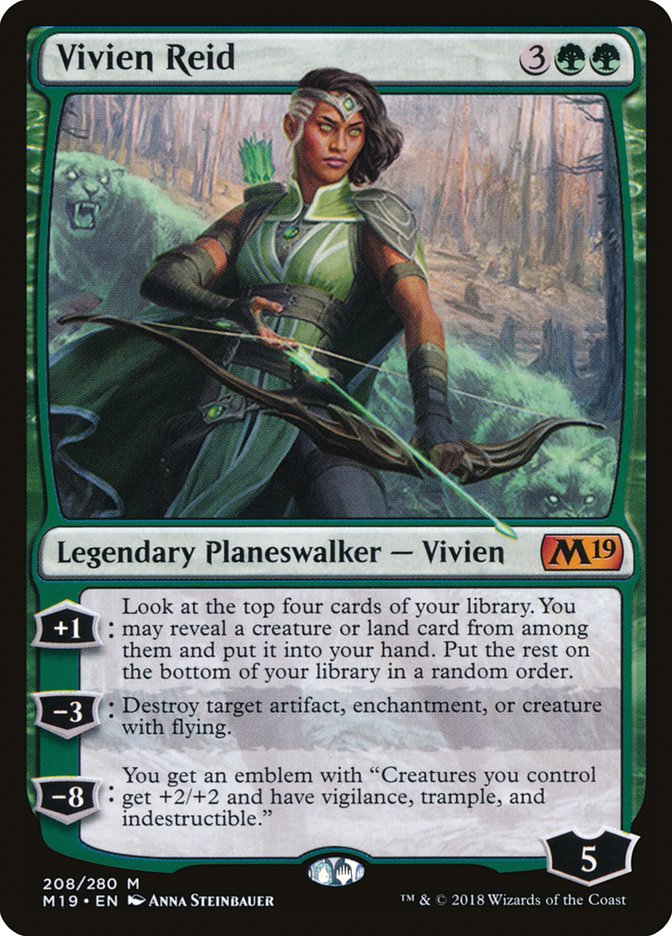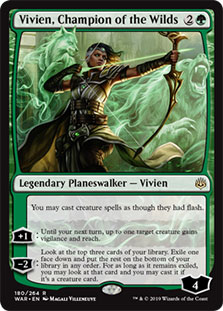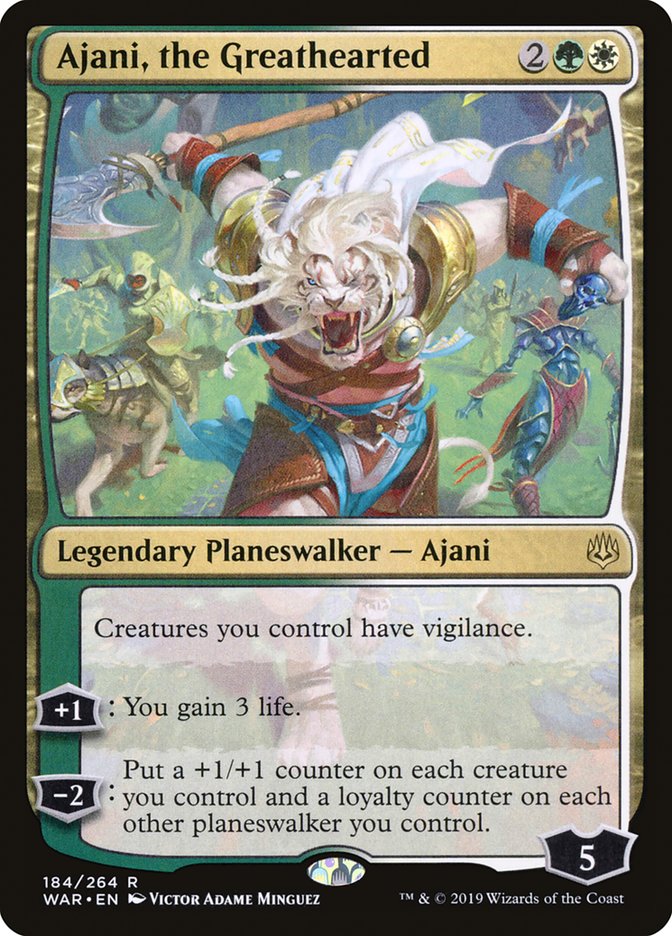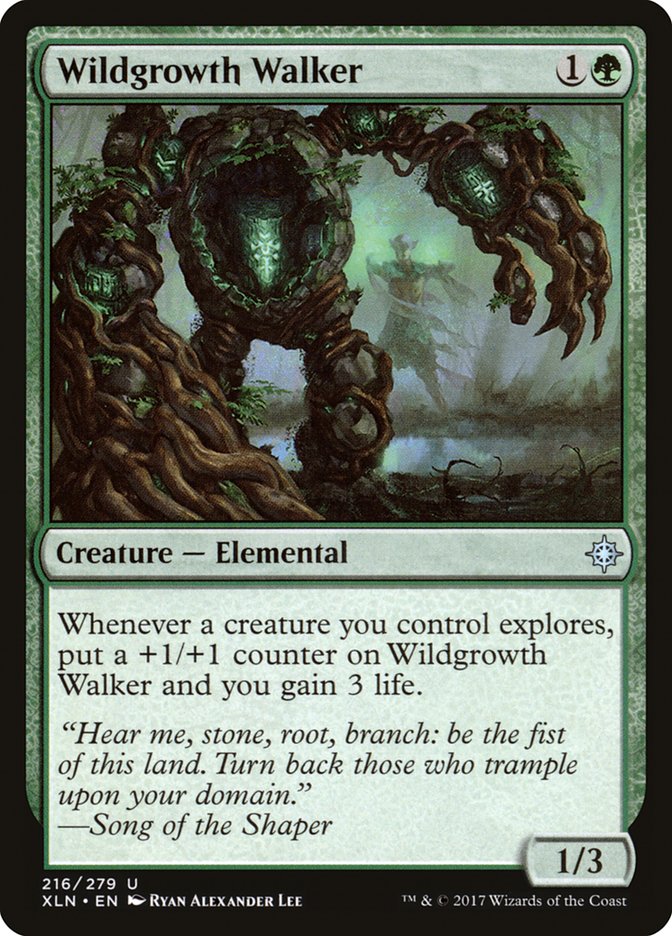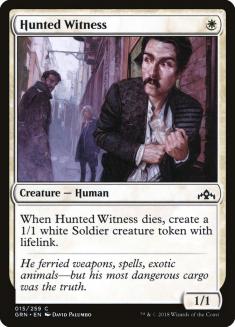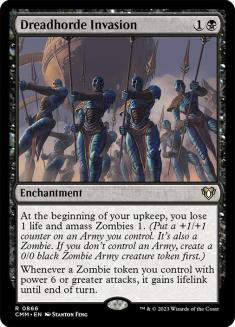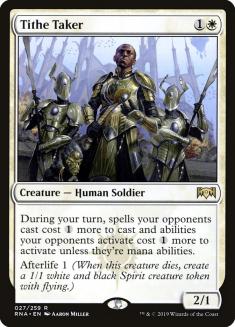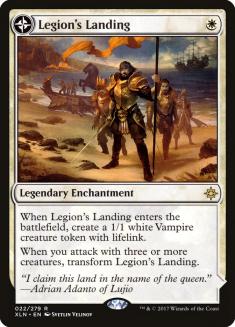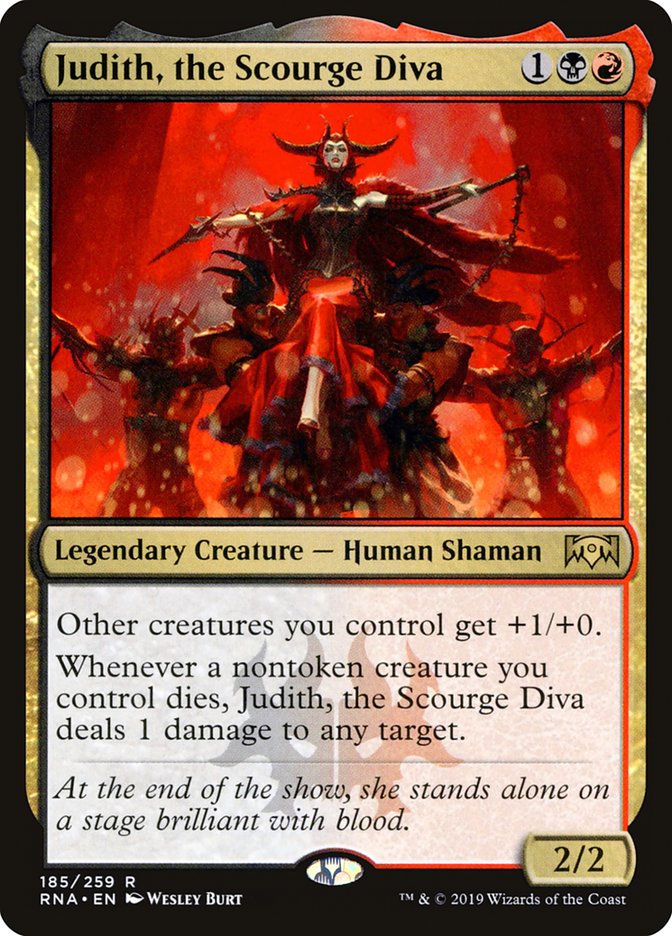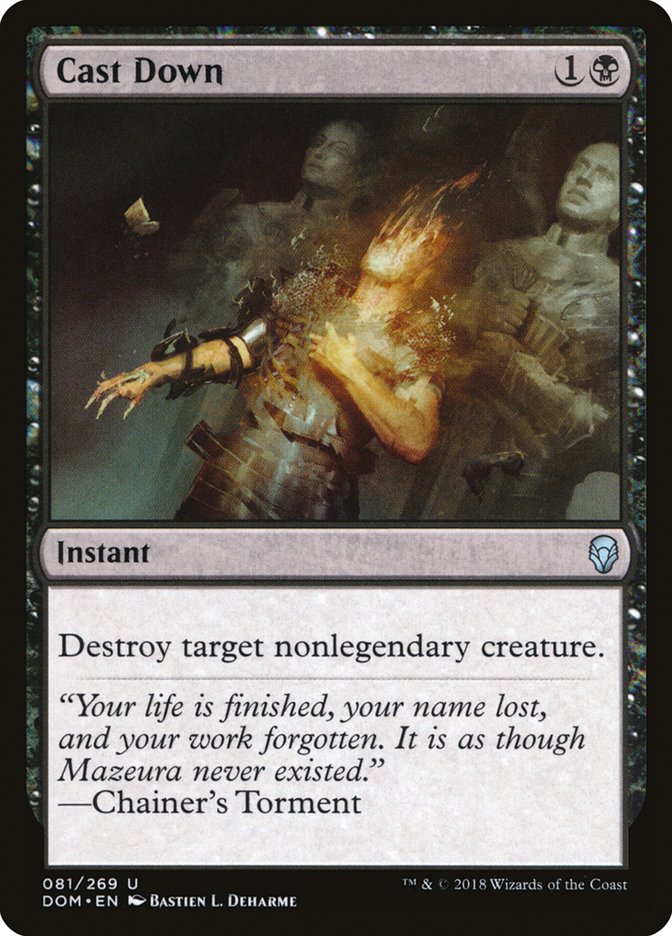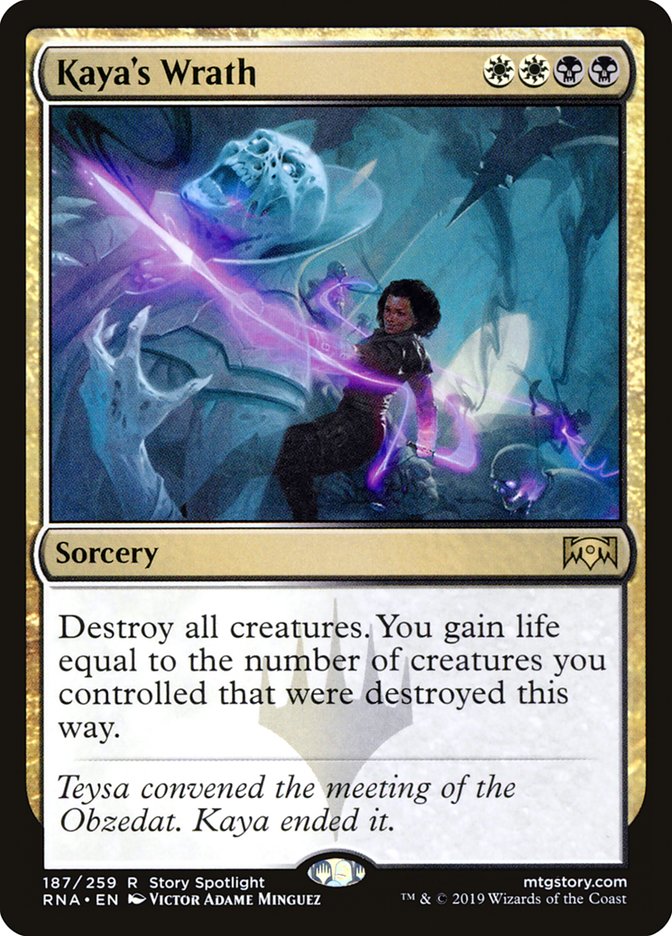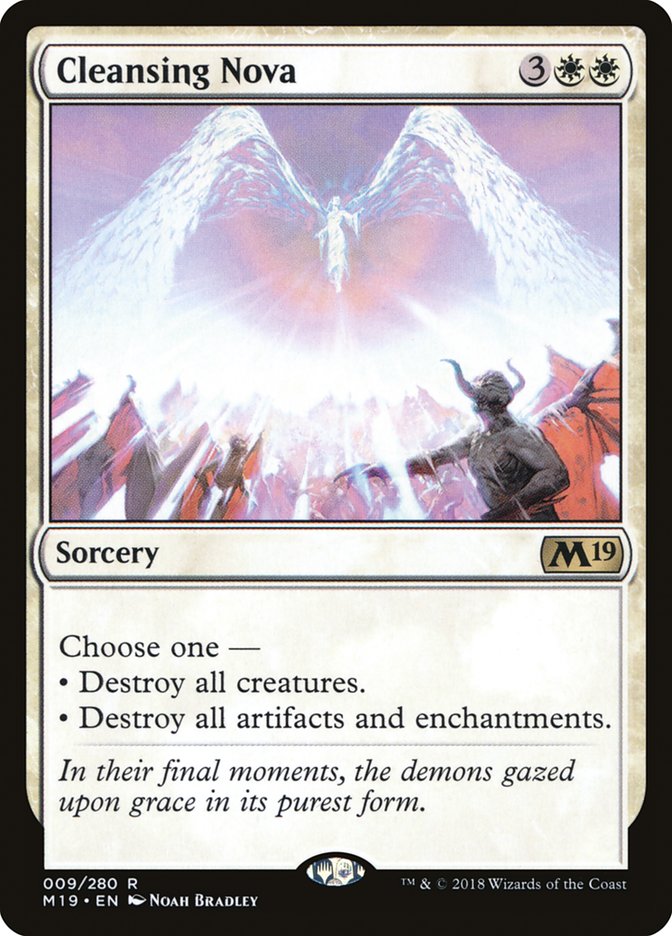Imagine an entire Standard format that was made to break Blood Artist.
….and then putting a pseudo-Blood Artist in Standard.
Cruel Celebrant is easily the most exciting role-player previewed in War of the Spark, but the reasoning isn’t obvious at first glance.
The Rules of Engagement
War of the Spark will be an entire set based around permanents that all create more permanents. Planeswalkers in general lend themselves to two kinds of play patterns, both of which we’ve seen in Standard over the last couple of years: resource-positive, and resource-negative.
The Esper decks that have been showing up in Ravnica Allegiance Standard are examples of the resource-negative. Over the course of a long game, they’ll have a large number of resources, but their primary goal is the reduce the resources that the opponent has available to them, in order to make it impossible for the opponent to ever kill them or their end-game finisher.
On the other side of the spectrum are the Golgari, and later Sultai, Midrange decks that simply tried to clog the battlefield to the point it wasn’t possible to pressure Vivien Reid; Karn, Scion of Urza; or a Vraska in the combat step.
With War of the Spark, we’re going to see more and more decks that fall into the latter camp of resource-positive decks that are interested in cluttering the battlefield as much as possible, all for the sake of accruing more value.
This new set of planeswalkers all have powerful abilities, and the fact that they are good for multiple activations is certainly noteworthy, but the fact that they lack an ultimate ability is a pretty big deal. This means that two decks comprised of cards that are playing to this strength will struggle to break through and kill the opponent.
Sure, there are answers that can cleanly deal with the creatures on the battlefield, but when the opponent has a planeswalker or two on the battlefield, killing a few creatures and letting them untap with their resource machines is hardly a winning strategy. This fact will reduce the popularity of sweepers in a majority of decks, while rewarding decks that are good at pressuring planeswalkers.
Creatures (20)
Planeswalkers (2)
Lands (23)
Spells (15)

This is a style of deck that’s firmly proactive and great at getting around players that try to clog up the battlefield for the sake of protecting planeswalkers. Cruel Celebrant is great at putting players in a “damned if you do/damned if you don’t” scenario during the combat step by giving these decks additional forms of reach, even when things get messy during blocks.
In the last couple of Standard formats, we’ve seen situations in which turtling up behind a Wildgrowth Walker and some explore creatures has been a good enough way to protect one’s planeswalkers and life total. That dynamic changes when go-wide decks come to play. The same is true when a deck doesn’t have a problem with any of its creatures dying.
When your entire deck is built around a card that expects its creatures to die, it isn’t exactly a colossal drawback to pressure a planeswalker in a combat step that involves a couple of chump-attacks. That’s not even getting into the fact that controlling multiple copies of Cruel Celebrant simply makes combat a nightmare for the opponent.
“No, no, I promise that all these creatures will deal at least two damage to you. Each.”
Cards like Cruel Celebrant become particularly attractive if creature-based strategies become popular. If the plan is for players to begin dedicating more resources to winning the battlefield, rather than trying to interact, leaning further into synergy is a way to out-trump opponents on the battlefield as well.
Creatures (26)
- 4 Duskborne Skymarcher
- 4 Legion Lieutenant
- 4 Dusk Legion Zealot
- 2 Champion of Dusk
- 4 Martyr of Dusk
- 4 Pitiless Pontiff
- 4 Cruel Celebrant
Planeswalkers (2)
Lands (24)
Spells (8)

Historically, tribal decks are the best way to beat what other people are doing on the battlefield if that’s the only fight that people are fighting. This is because these decks feature tons of cards with value that scales with the number of permanents controlled by their pilot. Champion of Dusk and Legion Lieutenant, for example, will be worth more on a battlefield of several creatures than one with one or two creatures.
This kind of thing seems intuitive when it’s spelled out but isn’t always as easy to identify during the deckbuilding portion of theorizing. The biggest reason is that these types of effects masquerade as a restriction, but as the pool of available cards expands, the easier it is to fill in the cracks with cards that naturally fit the deckbuilding restrictions that such cards demand. Cruel Celebrant being an Orzhov-colored Vampire is a plain example of this.
In that same vein, there comes a point where the synergy-based decks become more and more redundant, to the point of every card in the deck looking like it must be answered, lest the handful of unanswered cards completely take over the game on their own.
Creatures (24)
- 4 Judith, the Scourge Diva
- 4 Gutterbones
- 4 Hero of Precinct One
- 4 Footlight Fiend
- 4 Cruel Celebrant
- 4 Dreadhorde Butcher
Planeswalkers (2)
Lands (21)
Spells (13)

This deck is fast, it’s synergistic, and most importantly, it is redundant. Synergy decks live and die by how functional they are without their payoff cards, and outside of Footlight Fiend, many of the cards in this deck are powerful enough to pull their own weight in different matchups.
In this shell, Cruel Celebrant shines because it’ll rarely be the most important permanent on the battlefield, but it punishes the opponent for trying to interact with other pieces of the puzzle. Similar to the Orzhov Tokens deck, this deck leans into the punisher mechanics of Cruel Celebrant and Judith, the Scourge Diva.
The biggest strike against Judith’s triggered ability is that it doesn’t play particularly well with tokens, but her Anthem-esque effect works just fine. Even looking past the tokens in the deck, cards like Hero of Precinct One and Dreadhorde Butcher both demand a quick answer before they begin running away with the game, while both Judith and Cruel Celebrant create situations in which opponents are effectively forced to pay life in order to ever reasonably interact with anything on the battlefield.
This creates its own form of value when stapled onto every single creature that dies.
Normally, whenever somebody uses a simple removal spell, take Cast Down for example, there’s usually an even one-for-one exchange of resources, as the Cast Down itself is a card and the creature that it is destroying is a card. Unless the creature costs much more than the Cast Down, the exchange will be something close to mana-neutral. For something like Mardu Aristocrats, this isn’t the case.
Cards like Judith and Cruel Celebrant make it so every time the opponent does this, they’re getting taxed for a point or two of damage. Considering how many creatures are in the deck, it doesn’t take a particularly long time for this to add up.
Between the extra damage that’ll come from the opponent trying to remove creatures and the fact that so many of the cards in the deck tend to translate to more bodies or extra damage, spot removal is in an awkward place against these decks.
On top of the spot removal issue, sweepers in particular become a bit of a joke against this configuration of the deck. The last time this archetype was a major player in Standard, it played its own copies of Blasphemous Act because nuking the entire battlefield while controlling a Blood Artist or two was usually game over the for opponent.
This means that outside of exactly Cry of the Carnarium, sweepers will be ineffective against a strategy that fundamentally demands sweepers to effectively answer all of its threats. The traditional solution was simply to answer the copy of Judith, the Scourge Diva before casting Kaya’s Wrath, but now that there’s another playset of a card with a similar ability, and with Sorin, Vengeful Bloodlord to recur it all, it’s a much taller order.
Regardless of the shell, Cruel Celebrant is the type of card that pushes archetypes to the forefront of Standard that require different play patterns in order to beat it. On top of the hosts of modal spells that we’re getting from War of the Spark in the form of planeswalkers, getting things that promote interesting gameplay at uncommon is one of the most exciting aspects of what’s to come.




